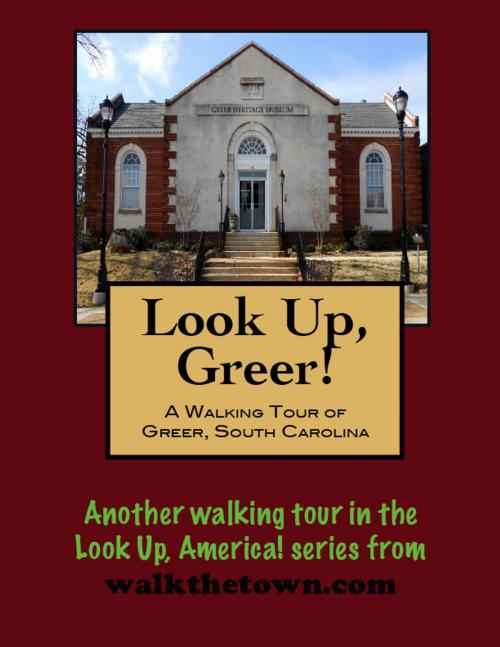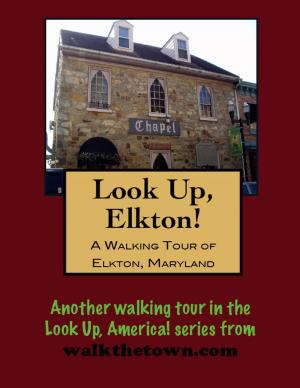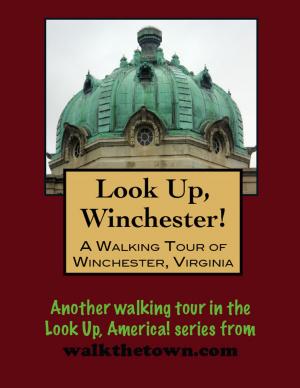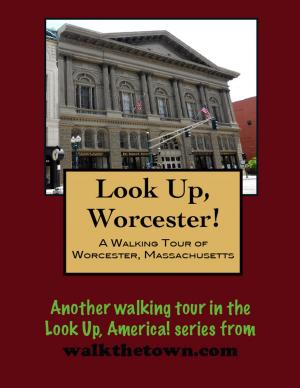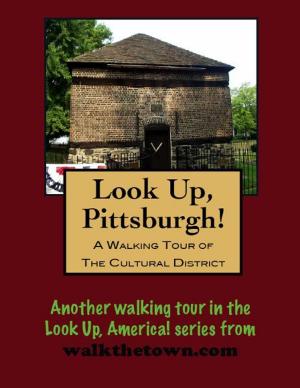| Author: | Doug Gelbert | ISBN: | 9781458083821 |
| Publisher: | Doug Gelbert | Publication: | March 5, 2011 |
| Imprint: | Smashwords Edition | Language: | English |
| Author: | Doug Gelbert |
| ISBN: | 9781458083821 |
| Publisher: | Doug Gelbert |
| Publication: | March 5, 2011 |
| Imprint: | Smashwords Edition |
| Language: | English |
There is no better way to see America than on foot. And there is no better way to appreciate what you are looking at than with a walking tour. This walking tour of Greer, South Carolina is ready to explore when you are. Each walking tour describes historical, architectural landmarks, cultural sites and ecclesiastic touchstones and provides step-by-step directions.
Every tour also includes a quick primer on identifying architectural styles seen on American streets.
The town traces its beginnings back to 1873 when it was established as a flag station along the Atlanta Charlotte Air Line Railroad. Officially incorporated as Greer’s in 1876, the town later became known simply as Greer. The main business avenue stretched out from the railroad depot and quickly became known as Trade Street. Cotton brought in most of that trade and by the early 1900s two new railroads, Southern Railways and the Piedmont and Northern, constructed competing lines through Greer.
Textile industries were expanding rapidly. Within 100 miles there were an estimated 400 mills operating by 1930, including several in and around Greer itself. Warehouses, lumber and fuel production and the manufacture of cotton byproducts such as cotton seed oil and fertilizer were an outgrowth of the proliferation of the textile mills. The streetscape of Greer was transformed as the older wood frame buildings were replaced with brick commercial structures.
Today’s Greer is a snapshot of the early 1900s with the Downtown Historic District stuffed with intact examples of early upcountry commercial architecture. But before we get there our walking tour will begin a block away at the modern city government complex...
There is no better way to see America than on foot. And there is no better way to appreciate what you are looking at than with a walking tour. This walking tour of Greer, South Carolina is ready to explore when you are. Each walking tour describes historical, architectural landmarks, cultural sites and ecclesiastic touchstones and provides step-by-step directions.
Every tour also includes a quick primer on identifying architectural styles seen on American streets.
The town traces its beginnings back to 1873 when it was established as a flag station along the Atlanta Charlotte Air Line Railroad. Officially incorporated as Greer’s in 1876, the town later became known simply as Greer. The main business avenue stretched out from the railroad depot and quickly became known as Trade Street. Cotton brought in most of that trade and by the early 1900s two new railroads, Southern Railways and the Piedmont and Northern, constructed competing lines through Greer.
Textile industries were expanding rapidly. Within 100 miles there were an estimated 400 mills operating by 1930, including several in and around Greer itself. Warehouses, lumber and fuel production and the manufacture of cotton byproducts such as cotton seed oil and fertilizer were an outgrowth of the proliferation of the textile mills. The streetscape of Greer was transformed as the older wood frame buildings were replaced with brick commercial structures.
Today’s Greer is a snapshot of the early 1900s with the Downtown Historic District stuffed with intact examples of early upcountry commercial architecture. But before we get there our walking tour will begin a block away at the modern city government complex...
